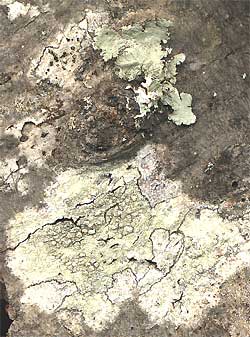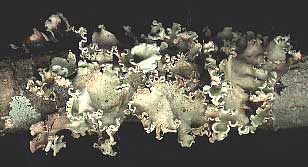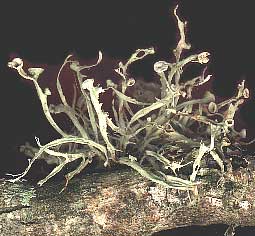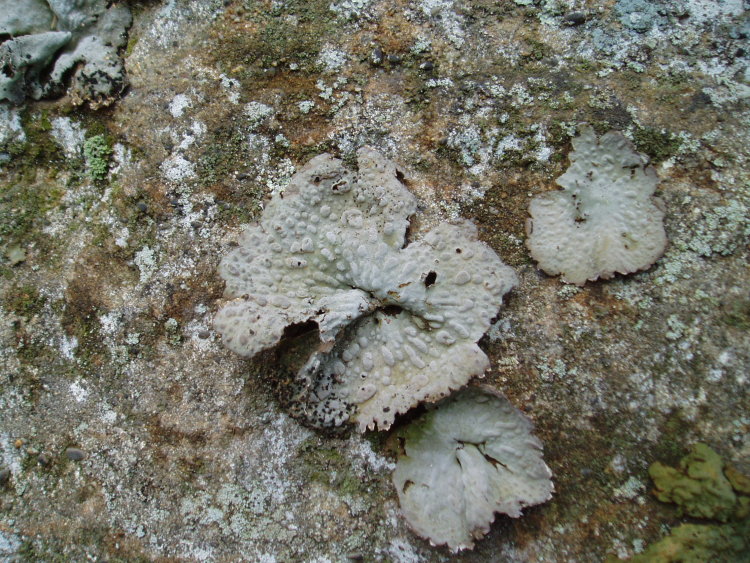Onto Lichens and Mosses this week. We have several around the homestead woods to use for study. Our woods are thick with all kinds.
What is the difference between lichens and mosses? Plain and simple, lichen is not technically a plant but moss is. Here is a description via WiseGeek:
Mosses and lichens are often confused, in part because many common names for lichens include the word “moss.” In fact, the two organisms are radically different and are not even in the same kingdom. Both moss and lichen are fascinating organisms, often overlooked because they are small and not very showy. Lichens and mosses grow all over the world and are used for dyes, animal fodder, ornamentation, medicines, and religious practices.
Lichens are perhaps the most amazing living things on Earth, because a lichen represents a symbiotic relationship between a fungus and either algae or cyanobacteria. The symbiotic nature of lichen was not fully understood until the 19th century, when the idea was first proposed. Lichens form a fascinating example of cooperative relationships in nature, with the fungus using the algae or bacteria to produce energy, while the algae or bacteria enjoys the protection the fungus provides.
Lichens reproduce in several ways. Many lichens produce spores that attempt to capture partner algae or bacteria, while others reproduce through fragments of the lichen that break off and scatter. Lichens can grow almost anywhere in the world, from extremely acidic soil to freezing arctic conditions, and are found growing on trees, rocks, and everything in between. Contrary to popular belief, the lichens that colonize trees, such as members of the Usniafamily, are not harmful to their hosts, and in fact, they often capture valuable nutrients.
Lichens take three forms. Crustose lichens, often found growing on rocks, are characterized by a crusty appearance. Crustose lichens are often vividly colored and create the bright streaks seen on rocks from a distance. Foliose lichens are leafy or stringy and are often found growing on the ground or around trees. Fruticose lichens form stalks, which sometimes form bright fruiting bodies.
Most observers don't even notice the small and ubiquitous lichen, but a determined searcher can find hundreds of lichen species on a short walk in any region, from the depths of the woods to the streets of a major urban area. Lichens can be extremely difficult to properly identify, often requiring the use of a microscope and specialized staining to discover the mingled identities coming together to make the lichen.
Moss, on the other hand, is a plant. Moss belongs to the bryophyta phylum, which is one of the most genetically diverse on Earth, including 10,000 species in 700 genera. Moss can be found all over the world as well, and it forms a major part of many ecologies by holding back erosion, retaining water, and feeding numerous animal and insect species. Moss is an archaic non-vascular plant, meaning that it has been around in various forms for millions of years, and it reproduces by casting out spores. Like lichen, moss can also reproduce from broken off parts of the parent plant.
Physically, lichens and mosses can be difficult to distinguish. In general, mosses grow in moist dark areas and have small leaf-like structures, in addition to stems. Lichens often appear grey or pale white in appearance, while moss is usually green. Many lichens also create disc shaped fruiting bodies, which cannot be seen on mosses.
Our Notes:
- A lichen is an algae with fungi as a partner. Most lichens are algae and fungi combinations. The same algae that lives with a fungus in lichen form can sometimes be found alone, but the fungus cannot live apart from the algae.
- The fungus forms a frame to hold the algae cells. The fungus absorbs moisture and minerals for the algae. The algae makes food for both of them by the action of its chlorophyll.
- Lichens multiply like other thallophytes do: they form spores. These spores must find the right kind of algae in the right place before they can begin growing.
- The spores of a thallophyte and the plant parts that hold them are called fruit. The spore cases of mold are known as fruiting bodies because the reproductive spores are found there. The fruiting bodies of lichens sometime appear as small round dots. After the spores are gone, tiny hollows or holes remain.
- There are 3 groups of lichens:

Crustose: Crust-like, tightly fastened or even embedded in rocks, tree trunks, or soil.

Foliose: leaf-like, usually with root like parts below that hold them to rocks or trees

Fruticose: shrub-like, or branching, usually found on soil, rail fences,old rotten logs or tree trunks.
- Lichens can endure extreme drying and cold and revive again when the weather is more favorable.
- Lichens always grow with blue-green or green algae.
- Pitted lichen grows everywhere on limestone.The crust-like thallophyte sinks into the surface of the limestone and when it dies, leaves an arrangement of holes behind where the fruiting bodies had grown.
- The clot lichen, flat gray or greenish gray, has a cracked warty crust sometimes as large as 5" across. The fruiting bodies are shiny black dots, blood red underneath.
- Smooth rock tripe has a brown oval thallus that is black underneath. This leafy lichen variety grows on trees in the mountains of the east. When cooked, the 2-12" lichen has some minimal food value.

- The toad skin lichen has a leaf-like dark colored thallus that appears to be dented from below. It is a stiff, 4" lichen belonging to the rock tripe group.

- The red crest lichen can be found everywhere in eastern North America along decaying wood or rail fences, or on the ground itself. It is gray-green in color with scales on its sides. The fruiting bodies are red balls at the tip of the branched thallus. It is also known as British Soldier moss.

- The pale green goblet lichen is shaped like a scaly stem with a cup on top.The entire lichen is usually just an inch tall.
.thumb.jpg)
- One leaf-like fungus-bacteria combination is named 'red blanket', but is not actually a lichen. Real lichens have algal cells, but the red blanket has a purple bacteria. It grows on trees along the Gulf of Mexico and farther south.
- Reindeer Moss is a northern variety of branching lichen and is food to musk ox, caribou and some reindeer species.
- Old Man's Beard is a hanging lichen often seen on trees in the cool, cone-bearing evergreen forests of the north. The northern parula warbler uses this lichen/moss for its nest.
![[photo: usnea lichen]](http://www.perspective.com/nature/fungi/usnea-spp.jpg)
- The southern parula warbler nests in Spanish moss. Similar in appearance to the Old Man's Beard variety, Spanish moss is not actually a lichen.
- People in Iceland gather Iceland moss and use its starchy thallus for breadmaking. Lichens are also used in the making of litmus paper, medicines, and perfumes.
Want to grow your own moss? Here is a recipe to try out:
For growing moss, you will need:
1-½ cups of buttermilk
2 teaspoons of sugar
Blender
MossMix:
Add a handful of moss to the blender. Add the sugar. Pour buttermilk and blend to mix the ingredients and to break the moss into small pieces. Pour the mixture onto the areas where you want the moss to grow.
Craft ideas...
Use moss and lichens you've collected for a nature collage, glue onto a wood birdhouse, grow moss in a terrarium, glue moss to a picture frame...the ideas for fun projects are endless.
Some Links:
Barb over at The Handbook of Nature Study blog has so many great shares and link-ups you'll spend hours there. A couple posts on lichens and mosses can be found here and here. A link she shared on the animated life cycle of moss here.
A PDF on mosses and lichens
Ohio Moss and Lichen Association identification guide pages
Ten Things to know about Lichens
a lichen portrait gallery...great images to print for a notebook
a great colorful PDF from the Minnesota DNR on the life of lichens
NEW LINK (added 9-3-12) Nice General Botany links for Lichens and a section of mosses
2 comments:
This is great! I'm pinning it onto my Little House Link-up board on Pinterest (hope that's ok - let me know if not), because it'd be great inspiration for Week 1 of the Prairie Primer for Plum Creek.
I see that you have a bunch of Little House posts, and I'd be delighted if you'd come and link them up: http://theusualmayhem.blogspot.ca/2012/08/first-little-house-link-up.html
I'm trying to make a place where all the little House fans can find each other and share ideas!
I am totally indebted to the We Love The Prairie Primer blog (http://welovetheprairieprimer.blogspot.com)and my Prairie Primer unit study for all the great ideas and reading plans for The Little House on the Prairie series! Definitely the best link-to's I've found out there. :-)
Post a Comment